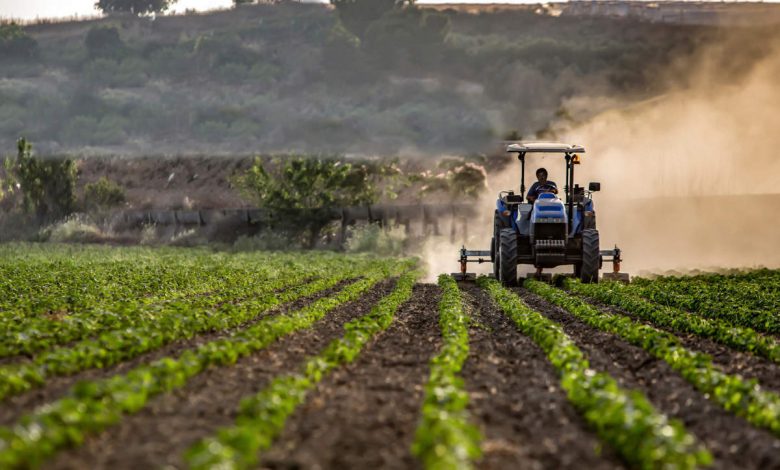Crop diversification – The future of agriculture sector

Crop diversification refers to adding new crops to agricultural production on a particular farm, taking into account the different returns from value-added crops with complimentary marketing opportunities.It means having a wider choice of a variety of crops. Farmers will have more options to grow so that they can plan accordingly.
Agriculture Diversification refers to a change in cropping pattern or the farmers opting for other non-farming options like poultry farming, animal husbandry, etc. It becomes very famous nowadays as it helps in earning more income for the farmers and reduces the risk involved in agriculture.
This practice allows farmers to expand their production, which helps generate a higher level of income. As a result, the agriculture sector contributes approx 20 per cent to the GDP. Crop diversification is now becoming an essential element of the agriculture sector because it has many advantages. It can help in enhancing productivity. In this article, we will analyze the all-important aspect of crop diversification in details.
India’s agriculture sector
India is an agrarian country; more than 65 percent of the population indulge in agriculture. India has seen tremendous progress in the agricultural sector over the last 50 years. From ‘hand to mouth’ conditions in the early sixties, we have not only become self-reliant in food grains but have acquired sufficient resilience to tide over adverse situations. Wheat production has increased around 10 times and rice production 4 times during this period.
These achievements result from a policy framework of improving rural infrastructure, including irrigation, research, extension, provision of agricultural inputs at reasonable prices, and marketing support through a minimum price mechanism. Modern technologies also helped in enhancing productivity. Nowadays,many modern agricultural machines are available in the market such as modern tractors which are very beneficial in the agriculture process like the Mahindra tractor.
Lack of infrastructure facilities
Agriculture has seen tremendous growth over the years. However, still, it has faced poor infrastructure conditions. Lack of infrastructure facilities is a serious concern. The majority of farmers are dependent on rainfall due to lots of struggles that have to be faced by them. Lack of knowledge is also a concern for farmers. They are not aware of the modern technologies that can help enhance productivity, such as Mahindra Tractor. Insufficient infrastructure is a serious concern for the country. It affects food security, which is the need of today’s world due to the rapid increase in population. Now let us discuss the types of Diversification in details.
Types of Diversification
There are mainly two types of crop Diversification prominent in India. They are:
- Horizontal Diversification : This relates to multiple cropping or mix of crops instead of cultivating a single crop. Horizontal Diversification is especially useful for small farmers who hold a small piece of land. It allows farmers to earn more by escalating cropping intensity.
- Vertical Diversification : It refers to the incorporation of industrialisation along with multiple cropping. In this kind of Diversification, farmers invest in horticulture, livestock rearing, the culture of aromatic plants, etc.
Let us discuss the advantages of crop diversification in detail and analyse them accordingly.
Advantages of crop diversification
Although there are many advantages of crop diversification, let’s analyse the significant benefits of crop diversification.
- Diversified farming has less risk than specialised farming.
- It is less risky because it does not depend on a single crop. On the other hand, specialised farming is far more risky as it depends on a single crop.
- By-products of the farm can be appropriately utilised as cattle, poultry, birds, etc., are reared with crop production.
- The farmer and labour engaged all year round in different activities.
- It has Less risk of crop failure and market price of the product.
- Soil fertility can be checked as land kept under cultivation throughout the year. It is one of the essential advantages of this method. It helps in maintaining soil quality.
Disadvantages of crop diversification
With many advantages of crop diversification, there are lots of disadvantages of crop diversification as well. Let us discuss the major challenges for crop diversification.
- The wastage of farms in any farm is difficult to detect.
- Proper inspection of different enterprises is complex.
- Do not fetch desirable profit so long as the co-operative marketing facility is not there, and it won’t be very encouraging for the farmers.
- Farmers can’t maintain all types of machinery required for different crops. It can add cost for agriculture, due to which it becomes challenging for farmers to survive.
By analysing all the facts mentioned above, we can conclude that modern technologies such as tractors have helped the agriculture sector develop from the last few decades, such as the Sonalika tractor.Crop diversification is the future of the agricultural sector as there are many advantages of this method. However, there are many challenges also before it that need to be looked at to resolve.





